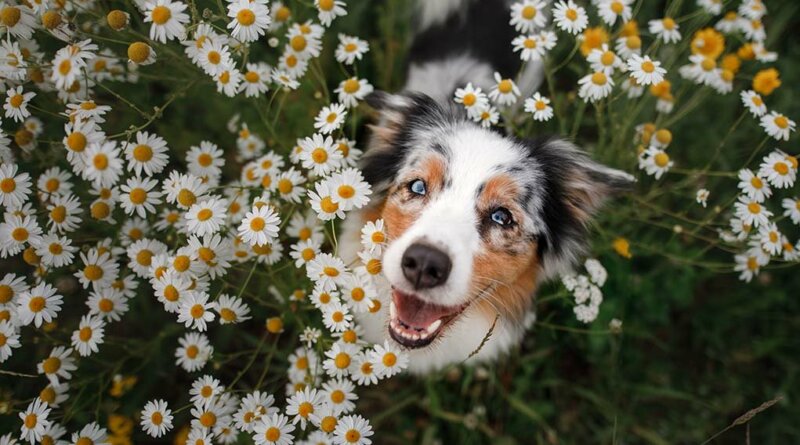12 Things Dog Owners Should Watch Out for in Spring – Top Dog Tips
Winter is always viewed as the most problematic season for dogs and dog owners. However, as warm and awesome as spring is, it offers quite a few things for dog owners to watch out for as well. Here’s a quick list of the 12 potential problems you should keep in mind during the spring months if you want your dog to have a carefree, healthy and joyous time.
1. Allergens
Allergies are one of the biggest problem and annoyance for most people in the spring. They are not just a human problem – dogs can very easily develop allergies too, and this can pose a problem both for your daily walks, as well as for the dog’s health in general.
To deal with a dog’s allergies, you should regularly wash them with an allergen-removing shampoo. If you think that your pooch might have an allergic reaction, take them to the vet and get the dog tested to find out what’s the cause of allergic reactions.
If there’s a problem, the vet will know what medications to prescribe. Don’t ignore any symptoms, since what you view as a minor and harmless allergic reaction can sometimes turn out to be something much more significant.
2. Hide Your Allergy Meds
Our own allergic troubles can present a significant problem for our dogs as well. A lot of people with spring allergies tend to buy and use anti-histamine medication. And while these are effective for us, some brands of anti-histamines are highly toxic to dogs.
If you pup gets a hold of your medication, they will experience ingestion, vomiting, lethargy, incoordination, wobbliness, hyper-excitement and tremors. These issues can take 4 to 7 hours to develop which gives you some time, but you shouldn’t postpone an immediate visit to the vet. If the dog is left untreated, they can go into respiratory depression or coma.
3. Beware of Ticks and Fleas
Spring is also the season for heightened instances of ticks and fleas. Remember to check your pooch for these parasites after each daily walk, hikes, trip to the park. When ticks and fleas are caught early they are much easier to get rid of.
Fleas can be very bothersome when they spread and ticks carry even more diseases with them that should never be ignored.
4. Mosquitoes
There are flying parasites such as mosquitoes that can bring some problems through their bites. Most commonly, they transmit heartworm disease. Fortunately, there is an easy fix for this: you should always give your dog some preventive heartworm medication at the start of the spring season.
5. Stash Away All Cleaning Chemicals
Spring is the time for big house cleaning, but many household products and cleaning chemicals can be dangerous to dogs, so keep them away from your pup’s reach. During their spring cleaning chores, dog owners risk forgetting a chemical in the open for even just a few minutes, which is enough for any dog to go get a taste.
6. Chocolate Is Still Dangerous
Chocolates are not any more dangerous during spring than they are the rest of the year, but Easter and other spring holidays means a lot more chocolate that your pup is going to be around. Organize those chocolate egg hunts for the kids, but remember to keep your dogs away from this particular activity.
7. Raisins Are a No-No
Chocolate is not the only dangerous treat for your dog. Most sweets are problematic for canines, but around Easter holidays in particular, grapes, raisins, currants and sultanas rise as an issue because they can cause kidney failure in dogs. Raisins tend to be used for foods like hot cross buns, mince pies, fruit loaf and others that are appealing to dogs.
8. Check Your Garden Plants
The spring is a beautiful season full of gorgeously blooming flowers and plants, but a lot of them can present a danger for your dog. Whenever you are going out with your dog, make sure that he’s not eating any plants.
If you have a fondness for plants, learn those that are dangerous, or you can just keep your dog away from all plants in general. As a side note, gardening equipment like fertilizers, pesticides and other chemicals should always be kept away from your dog too.
9. Ivy Poisoning
Ivy is one of the most common problematic plants for dogs. If your pet has eaten ivy, you can expect symptoms such as drooling, vomiting or diarrhea. You might also see blood in the vomit or feces of your pooch. Other symptoms may include skin reactions, conjunctivitis, itchiness, skin rashes and more.
10. Bluebells Are Not Safe Either
Bluebells present another significant danger for dogs in the spring months, as all of their parts are highly poisonous to canines. Eating any part of a bluebell can cause vomiting, diarrhea, abdominal discomfort, and arrhythmia.
11. Remember to Vaccinate Your Dog
Spring is the best time to make sure that your pup’s vaccination is up to date. Your dog is about to become much more social and interact with a lot of other dogs in the park and streets. Vaccinations ensure that your pooch won’t get sick with any contagious diseases, as well as that he won’t infect any other canine.
12. Microchip Your Dog
Another frequently ignored danger of the spring season is the risk of your dog escaping and/or getting lost. After several months of winter, most dogs can become restless and have a desire for running, hunting and exploring, which can be a problem.
So microchip your pooch for identification and attach a tag to their collar that’s imprinted with your home address, phone number and any other important contact information.
READ NEXT: 15 Dog Walking Dangers and Safety Tips




